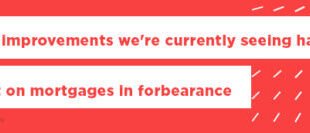
It’s nice to live in a home with a new kitchen, extra bathroom or a sweet DIY deck. But home improvement projects are also home equity builders. Think of them as home “investments” that can increase the difference between your home’s market value and the money you still owe.
Is there a return on your investment?
Approach a home improvement project by considering how much it would potentially improve your home’s value. Some will increase the value way beyond their cost. Others may not return the full investment when you sell — but if you plan on staying put for a while and it’ll improve the enjoyment of your home, you may want to take them on regardless.
When weighing whether to move forward with a renovation, do the math: consider the total amount you’d have put into the home when the project is done and compare it to what an appraiser would estimate as to the total post-reno value. If a major kitchen reno isn’t going to improve the home’s worth that much, aim for a smaller makeover.
Also, take a look around. If your total investment — add the cost of the home improvement to the price you paid for the home — is higher than the values of comparable home sales in the area, it’ll affect your eventual sale price.
Not enough saved up? Consider a cash-out refi
Home improvements can get expensive. If you don’t have enough in your savings accounts, you might want to tap into your home’s equity with a cash-out refinance. That’ll allow you to fund most projects without taking out a personal loan or second mortgage. And since a cash-out refi isn’t a second loan on top of your mortgage (it’s actually a replacement of your original mortgage), it’s typically available at better rates than a home equity line of credit (HELOC) or a personal loan.
And there’s a bonus: If current interest rates are lower than when you first purchased your home, you may be able to refinance and take out the cash for your projects without seeing much of a change in your monthly mortgage payments.
How a cash-out refi works
A typical refinance replaces your existing mortgage with a new one for the balance of what you still owe on your home. A cash-out refi replaces your current mortgage too, but it gives a little extra, like a loan you’re borrowing against the equity you’ve already built up in your house. It’s like using a debit card and getting a little cash back.
Imagine your home is worth $ 200K. If you still owe $ 100K on your loan, you’ve built up $ 100K in home equity, or 50% of the home’s value. Lenders want at least 20% equity to remain after refinancing, so that would leave you with 30% or $ 60K available to borrow. Your refinance amount could be as high as $ 160K ($ 100K for the principal) plus up to $ 60K borrowed. If you went for the full amount, you’d get a fat $ 60K check at closing.
Remember, you can’t pull out 100% of your home’s equity, so plan your home renovation projects accordingly.
13 home improvements that’ll increase your home’s value
- Amplify The Curb Appeal: Before someone even enters your home, they see your property. Attractive landscaping — even projects like keeping the lawn and walkways well lit — implies the entire place is well-maintained. Big return on investment!
- Make A Better Basement: You’ll need to install drywall, flooring and paint, but you’ll be adding more livable (and sellable) square footage to your home.
- Go Heavy Metal: If you can replace a wooden entry door with one made of steel, do it. You’ll appreciate the energy efficiency and low maintenance, and so will future buyers!
- Maximize The Garage: A new garage door with all the latest bells and whistles can last for 10-15 years, assuming it’s exposed to average weather conditions. You’ll love it, and so will the average house hunter.
- Change The Layout: If your home has lots of little rooms, consider combining the kitchen with the living and dining rooms. Get a contractor and a sledgehammer and open up your floor plans to let in more natural light.
- Kitchen & Bath Up-do’s: The key with kitchen and bath renovations is to think long term and appeal to future buyers. Think clean & functional rather than high-end and luxury. For the kitchen, consider appliances with the Energy Star symbol. For the bath, go with environmentally friendly low-flow toilets. Also, think about replacing the tub with a walk-in shower in your master bath; they appeal to older and younger buyers alike.
- Exterior paint: Hiring a pro to give your home a fresh coat is a great investment, but you don’t need to repaint the entire house to freshen it up. First impressions go a long way, so pressure-wash the surfaces to remove dirt and mold and touch up where needed. Then focus on painting the front door and window trim.
- Exterior siding: Here too, you can have issues with durability and mold. Powerwash what you can to get a good look, and if you need to replace it, aim for new fiber-cement or vinyl siding.
- Calm Your Colors: Your favorite color might be Terracotta, but hold off if painting inside. If you plan to sell in the next five years or so, go less personal. A more neutral color palette may make it easier for buyers to imagine their stuff in your space.
- Watch Your Step: You’ll recover more of your investment by refinishing the hardwood floors you already have instead of replacing. But if you have wall-to-wall carpets or vinyl that has seen better days, installing hardwood floors will make a huge difference.
- Open a Window: Replacing double-hung windows with insulated, energy-efficient vinyl windows recovers nearly all the installation costs. Plus, new windows just let the light in better.
- Redo the Roof & HVAC: Buyers always ask about the age of the roof and heating systems. Replacing a worn roof always recovers the cost at resale. And a recently installed HVAC recoups much of the investment. More importantly, not replacing these assets could cause more damage and keep your home from selling at all.
- Upgrade Alexa: Millennials are a force to be reckoned with in the real estate market. They want smart home technology, like keyless entry, home assistants, and programmable heating and lighting that can be controlled remotely by phone or smart home hub.
Benefits of using a cash-out refi for home improvement
Remember, a cash-out refi can give you more than just a way to start a home improvement project. Additional benefits might include:
- Lower interest rates! You’ll do better with a cash-out refi than with personal loans, HELOCs, or funding your project with a credit card.
- More pocket change. With lower interest rates, you may end up with a smaller monthly mortgage payment.
- No extra payments. Because the cash you get back is rolled into your mortgage, you still have only one check to write every month.
- You’re in control. Unlike other home improvement mortgages, a cash-out refi lets you decide how to use the money. If you choose to consolidate debt or go on a vacation, that’s cool too.
- Possible tax breaks. If the cash is used for home improvements, you may be able to deduct mortgage interest. Ask your tax preparer.
What’s next?
If you’ve got home improvements on your to-do list and don’t know how to pay for them, consider a cash-out refi. Now may be a perfect time, especially since interest rates are currently at historic lows. If you purchased a home a few years ago and have some equity built up, you might benefit from a cash-out refinance.
Speak to a loan officer in your area to see if you qualify.



